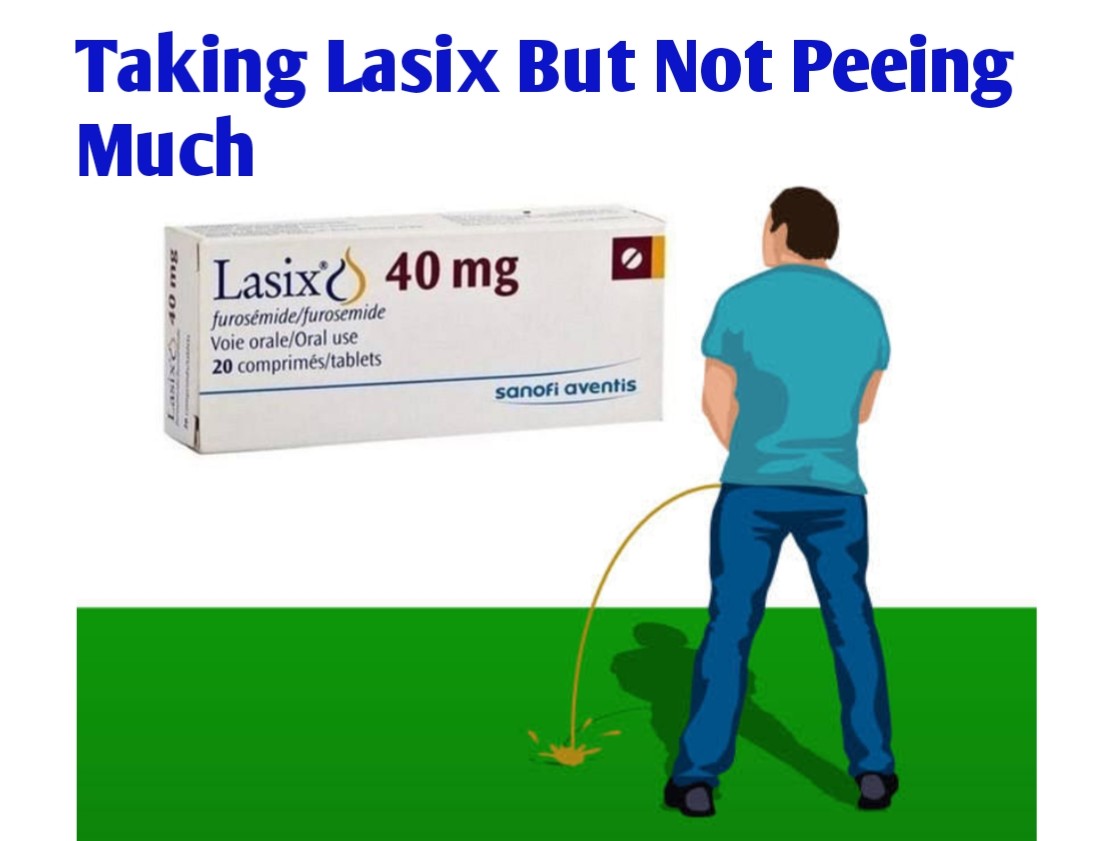What is Lasix?
Lasix is a brand of furosemide, a medication used to treat hypertension (high blood pressure). It is also used to treat edema. This is swelling due to fluid buildup in the body. Edema can be caused by other medical conditions such as heart failure, cirrhosis of the liver, or kidney disease.
Furosemide may be used as part of combination therapy to treat high blood pressure. This means you may need to take it with other medications.
How Lasix works
Lasix belongs to a class of drugs called diuretics. A class of drugs is a group of medications that work in a similar way. These drugs are often used to treat similar conditions. Lasix works by helping your body get rid of excess salt and water. It does this by increasing the amount of urine your body makes. This helps lower your blood pressure as well as reduce swelling.
How should I take Lasix?
Furosemide comes as a tablet and as a solution (liquid) to take by mouth. It usually is taken once or twice a day. When used to treat edema, furosemide may be taken daily or only on certain days of the week. When used to treat hypertension, take furosemide around the same time(s) every day.
Typical dosing for Lasix is as follows:
Swelling (edema): Furosemide (Lasix) can be taken once or twice a day for swelling. Adults typically start with 20 mg to 80 mg per dose. Some adults with really bad swelling problems may take up to 600 mg in a day. Children typically start with 2 mg/kg per dose but usually will not take more than 6 mg/kg. Your provider will adjust your dose as needed.
High blood pressure (hypertension): Furosemide (Lasix) is usually taken twice a day for high blood pressure. Adults typically start with 40 mg per dose. Your provider will adjust your dose as needed. Follow the directions on your prescription label carefully, and ask your doctor or pharmacist to explain any part you do not understand. Take furosemide exactly as directed. Do not take more or less of it or take it more often than prescribed by your doctor.
Lasix controls high blood pressure and edema but does not cure these conditions. Continue to take furosemide even if you feel well. Do not stop taking furosemide without talking to your doctor.
It’s important that you drink the right amount of water every day. During exercise or in hot weather, make sure you stay hydrated since the combination of furosemide (Lasix) and sweating can cause dehydration and low blood pressure. If you take furosemide (Lasix) for swelling due to problems with your organs (like heart failure or liver disease), you need to be careful about drinking too much. Ask your provider about how much water you should drink and how to tell if your body has too much or too little fluid.
Why Am I Taking Lasix But Not Peeing Much?
Taking Lasix but not peeing much could be a sign of dehydration. It’s important that you drink the right amount of water every day. During exercise or in hot weather, make sure you stay hydrated since the combination of Lasix and sweating can cause dehydration and low blood pressure.
If you take Lasix for swelling due to problems with your organs (like heart failure or liver disease), you need to be careful about drinking too much. Ask your provider about how much water you should drink and how to tell if your body has too much or too little fluid.
When you start taking Lasix, your kidneys will start making more urine within 1 hour of taking a Lasix pill. The peak diuretic effect occurs within the first or second hour, which then reduces over the next 6 to 8 hours. According to Meds Safety, you should tell your doctor or healthcare provider if you are taking Lasix but not peeing much since this might also mean that the medication is not the best for you, or that you need a higher dose.
Side effects of Lasix
Side effects of Lasix include:
- constipation.
- diarrhea,
- dizziness,
- increased urination,
- itching or rash,
- muscle cramps,
- spinning sensation,
- stomach pain, and
- thirst,
- weakness,
Serious side effects of Lasix include:
- clay-colored stools,
- dark urine,
- dehydration,
- electrolyte abnormalities,
- fever,
- jaundice (yellowing of skin or eyes),
- loss of appetite, and
- nausea,
- rapid weight loss.
- vomiting,
Lasix Contraindications
- Lasix is not right for everyone. Do not use it if you had an allergic reaction to Lasix.
Lasix Warnings
- Lasix could lower your blood pressure too much, especially when you first use it or if you are dehydrated. Stand or sit up slowly if you feel lightheaded or dizzy.
- Lasix may cause the following problems: Low levels of minerals in your blood, such as potassium and sodium, blood sugar level changes, and hearing problems.
- Lasix may make your skin more sensitive to sunlight. Wear sunscreen. Do not use sunlamps or tanning beds.
- Make sure any doctor or dentist who treats you knows that you are using this medicine.
- Tell your doctor if you are pregnant or breastfeeding, or if you have kidney disease, liver disease (including cirrhosis), diabetes, gout, low blood pressure, lupus, an enlarged prostate, trouble urinating, or an allergy to sulfa drugs. Tell your doctor if you are on a low-salt diet.
- Your doctor will do lab tests at regular visits to check on the effects of this medicine. Keep all appointments.
- Keep all medicine out of the reach of children. Never share your medicine with anyone.
- Severe diarrhea
- Unusual bleeding or bruising
- Yellow skin or eyes
Lasix Interactions
- Some medicines can affect how Lasix works. Tell your doctor if you are also using any of the following: Cisplatin, cyclosporine, digoxin, ethacrynic acid, licorice, lithium, methotrexate, or phenytoinAdrenocorticotropic hormone (ACTH)LaxativeMedicine to treat an infectionNSAID pain or arthritis medicine (including aspirin, diclofenac, ibuprofen, indomethacin, naproxen)Other blood pressure medicinesSteroid medicine (including dexamethasone, hydrocortisone, methylprednisolone, prednisolone, prednisone)Thyroid medicine
- If you also take sucralfate, allow at least 2 hours between the time you take Lasix and the time you take sucralfate.
- Alcohol, narcotic pain medicine, or sleeping pills may cause you to feel more lightheaded, dizzy, or faint when used with this medicine.
- This medicine could lower your blood pressure too much, especially when you first use it or if you are dehydrated. Stand or sit up slowly if you feel lightheaded or dizzy.
- This medicine may make your skin more sensitive to sunlight. Wear sunscreen. Do not use sunlamps or tanning beds.
- Your doctor will do lab tests at regular visits to check on the effects of this medicine. Keep all appointments.
- Keep all medicine out of the reach of children. Never share your medicine with anyone.






